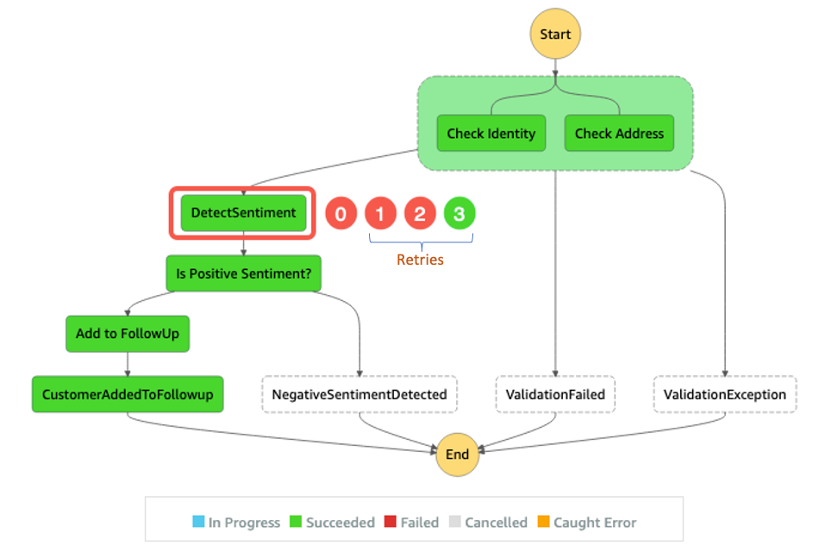AWS Compute Blog
Tag: contributed
Introducing AWS Virtual Waiting Room
The AWS Virtual Waiting Room solution is available today at no additional cost, provided as open source under the Apache 2 license. It supports customized integration with any front-end application via a variety of integration techniques.
Capturing client events using Amazon API Gateway and Amazon EventBridge
This post shows how to send client events to an API and EventBridge to enable new customer experiences. The example covers enabling new experiences by creating a way for software clients to send events with minimal custom code.
Mocking service integrations with AWS Step Functions Local
This post is written by Sam Dengler, Principal Specialist Solutions Architect, and Dhiraj Mahapatro, Senior Specialist Solutions Architect. AWS Step Functions now supports over 200 AWS Service integrations via AWS SDK Integration. Developers want to build and test control flow logic for workflows using branching logic, error handling, and retries. This allows for precise workflow execution with deterministic […]
Using the circuit breaker pattern with AWS Step Functions and Amazon DynamoDB
This post is written by Anitha Deenadayalan, Developer Specialist SA, DevAx Modern applications use microservices as an architectural and organizational approach to software development, where the application comprises small independent services that communicate over well-defined APIs. When multiple microservices collaborate to handle requests, one or more services may become unavailable or exhibit a high latency. […]
Introducing AWS Lambda batching controls for message broker services
This post is written by Mithun Mallick, Senior Specialist Solutions Architect. AWS Lambda now supports configuring a maximum batch window for instance-based message broker services to fine tune when Lambda invocations occur. This feature gives you an additional control on batching behavior when processing data. It applies to Amazon Managed Streaming for Apache Kafka (Amazon […]
Using Node.js ES modules and top-level await in AWS Lambda
Lambda functions now support ES modules in Node.js 14.x runtimes. ES modules support await at the top-level of function code. Using top-level await maximizes the effectiveness of provisioned concurrency and can reduce the latency experienced by end users during cold starts.
Enriching addresses with AWS Lambda and the Amazon Location Service
This blog post performs address validation with the Amazon Location Service, demonstrating both geocoding and reverse geocoding capabilities. Using a serverless architecture with S3 and Lambda, you can achieve both cost optimization and performance improvement compared with traditional methods of address validation.
Building a serverless multi-player game that scales: Part 3
This post discusses how to perform a load test on a serverless workload. The process was used to validate a scale of Simple Trivia Service, a single- and multi-player game built using a serverless-first architecture on AWS.
Using an Amazon MQ network of broker topologies for distributed microservices
This blog explains the choices when designing a cross-Region or a hybrid network of brokers architecture that spans AWS and your data centers. The example starts with a concentrator topology and enhances that with a cross-Region design to help address network routing and network security requirements.
Introducing Amazon Simple Queue Service dead-letter queue redrive to source queues
This blog post is written by Mark Richman, a Senior Solutions Architect for SMB. Today AWS is launching a new capability to enhance the dead-letter queue (DLQ) management experience for Amazon Simple Queue Service (SQS). DLQ redrive to source queues allows SQS to manage the lifecycle of unconsumed messages stored in DLQs. SQS is a […]









